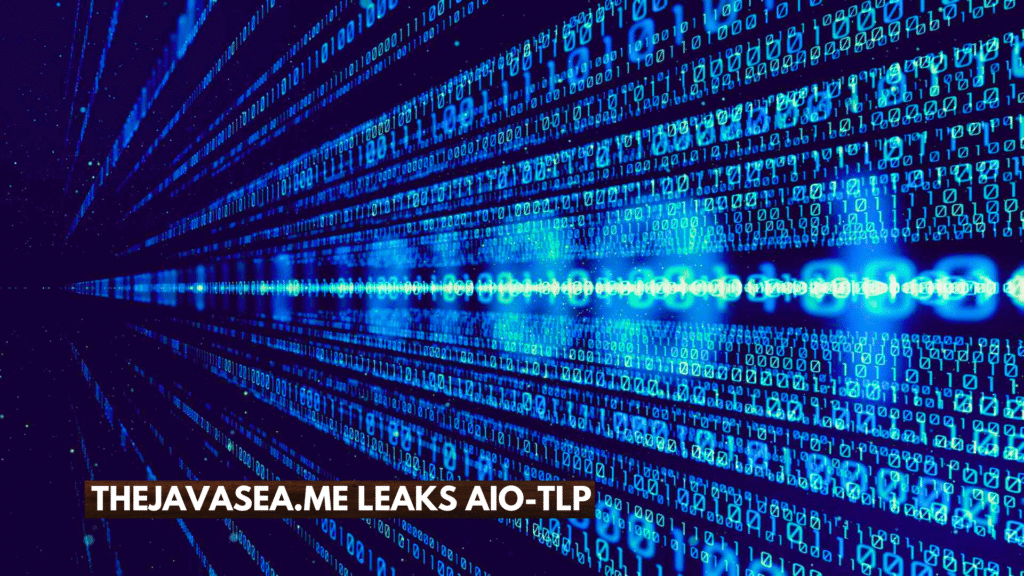In recent years, cybersecurity incidents have become increasingly complex, and among the most notable events is the thejavasea.me leaks aio-tlp. This particular breach has drawn attention from cybersecurity experts, corporations, and individuals worldwide. It represents a critical case study in understanding how sensitive data can be compromised and the profound consequences that such leaks can have on both personal privacy and organizational security. The incident underscores the urgent need for advanced cybersecurity measures and comprehensive risk management strategies in an era dominated by digital information.
How thejavasea.me Emerged as a Hub for Leaked Data and Why It Attracted Global Attention
Thejavasea.me leaks aio-tlp began as a relatively small online forum aimed at cybersecurity enthusiasts and researchers who were interested in exploring software vulnerabilities, digital security tools, and network configurations. Initially, it functioned as a learning platform, allowing users to share knowledge and techniques in a controlled environment. Over time, the platform grew to become a repository of highly sensitive information, including leaked personal data, corporate documents, and system vulnerabilities. Its expansion was fueled by the global demand for access to data that could provide insights into corporate networks or expose flaws in online systems. This transformation from a small educational forum to a widely recognized platform for leaked information has made it a focal point for discussions on data ethics and cybersecurity.
Understanding the Concept of thejavasea.me leaks aio-tlp and Why It Matters in the Context of Data Leaks
The term thejavasea.me leaks aio-tlp, or All-In-One Threat Level Protocol, refers to a framework for classifying sensitive information according to the risk associated with its disclosure. Each classification level indicates the severity and potential consequences of a leak. For example, data at the highest threat level could include personal identification numbers, banking information, or proprietary corporate secrets that could cause severe harm if exposed. The thejavasea.me leaks included information across multiple threat levels, emphasizing the breadth and severity of the breach. Recognizing the structure of thejavasea.me leaks aio-tlp is essential for understanding the implications of the leaks and why they have captured the attention of cybersecurity professionals globally.
The Scope of Data Compromised in the thejavasea.me Leaks AIO-TLP and Its Impact on Individuals
One of the most concerning aspects of the thejavasea.me leaks thejavasea.me leaks aio-tlp is the type of personal data exposed. Individuals whose information was compromised faced increased risks of identity theft, financial fraud, and unauthorized access to online accounts. Sensitive details, including email addresses, passwords, and financial information, were leaked, leaving affected individuals vulnerable. Beyond the tangible risks, there is also a psychological impact, as victims of data breaches often experience anxiety, stress, and a diminished sense of security online. The leak illustrates how interconnected and fragile personal data has become in the modern digital ecosystem.
| Category | Details | Impact |
|---|---|---|
| Platform Name | thejavasea.me leaks aio-tlp | Hosts and shares leaked data, attracting global attention. |
| Leak Type | AIO-TLP (All-In-One Threat Level Protocol) | Includes personal, corporate, and technical data classified by sensitivity. |
| Data Exposed | Emails, passwords, financial info, trade secrets, internal communications, software vulnerabilities | Risks include identity theft, financial fraud, corporate loss, and reputational damage. |
| Affected Users | Individuals and organizations worldwide | Personal accounts, corporate systems, and online privacy are at risk. |
| Legal Implications | GDPR, CCPA, and other privacy regulations | Organizations could face fines and legal action for failing to protect data. |
| Security Measures | Strong passwords, 2FA, regular monitoring, employee training | Helps reduce risk from data breaches and cyberattacks. |
| Global Significance | Cross-border impact | Highlights the interconnected nature of digital data and need for international cybersecurity standards. |
| Ethical Considerations | Unauthorized sharing of sensitive data | Raises questions about privacy, responsibility, and digital ethics. |
How Corporate Entities and Organizations Suffer from the Exposure of Proprietary Data
The leaks were not limited to individual data; corporate information was also significantly affected. Confidential communications, business plans, and trade secrets were among the sensitive data exposed. Such breaches can have lasting financial consequences, damage reputations, and reduce competitive advantage. Organizations may also face legal and regulatory challenges if the breach violates privacy laws such as the General Data Protection Regulation (GDPR) in Europe or the California Consumer Privacy Act (CCPA) in the United States. These legal ramifications highlight the importance of proactive measures, including data encryption, access controls, and regular security audits, to safeguard sensitive corporate information.

Ethical and Legal Implications Arising from the Unauthorized Dissemination of Sensitive Information
The ethical questions surrounding thejavasea.me leaks AIO-TLP are as significant as the practical consequences. Sharing sensitive data without consent challenges fundamental principles of privacy and digital responsibility. From a legal standpoint, organizations and individuals involved in handling this information could face severe consequences under international and national privacy laws. The incident has sparked debate over the balance between transparency and privacy, with cybersecurity experts emphasizing that ethical frameworks are as critical as technical defenses in preventing such breaches.
Lessons for Cybersecurity Professionals and Individuals in Light of the Javasea.me Breach
The thejavasea.me leaks aio-tlp serve as a cautionary tale for cybersecurity professionals, organizations, and individuals alike. For professionals, it emphasizes the importance of monitoring systems for vulnerabilities, investing in advanced security infrastructure, and implementing employee training programs that foster awareness of potential threats. Individuals, meanwhile, are reminded to take proactive steps, such as creating strong passwords, using two-factor authentication, and regularly reviewing their online accounts for suspicious activity. The breach demonstrates that cybersecurity is not solely a technological concern but also a matter of personal and organizational responsibility.
The Role of Cybercriminals and the Exploitation of Leaked Information
Cybercriminals are quick to capitalize on incidents like thejavasea.me leaks AIO-TLP. Personal information can be used for identity theft, phishing attacks, or targeted fraud schemes, while corporate information may be leveraged for competitive advantage or extortion. The detailed nature of the leaked data makes it easier for criminals to execute sophisticated attacks, highlighting the real-world consequences of digital vulnerabilities. This underscores the urgency for both reactive and preventive security measures across all sectors.
The Global Implications of thejavasea.me Leaks and the Need for International Cybersecurity Standards
The impact of the thejavasea.me leaks is not confined to a single region; it has global significance. Individuals and businesses across countries can be affected, illustrating the interconnected nature of the digital world. This incident highlights the need for international cooperation in cybersecurity regulations, stronger enforcement of data protection laws, and the establishment of global standards to prevent similar breaches. The leaks also prompt organizations to think beyond local compliance and consider comprehensive strategies for global data protection.
Moving Forward: Strengthening Digital Privacy and Security in the Age of Data Leaks
The thejavasea.me leaks AIO-TLP demonstrate that as technology evolves, so do the threats to privacy and security. Moving forward, it is crucial for governments, organizations, and individuals to collaborate in establishing robust cybersecurity practices. This includes adopting advanced encryption, regular vulnerability assessments, employee and public awareness programs, and ethical guidelines for handling sensitive information. The incident is a reminder that digital privacy is a shared responsibility and that proactive measures are vital to prevent future breaches.
Conclusion: thejavasea.me leaks aio-tlp
The thejavasea.me leaks AIO-TLP represent one of the most consequential cybersecurity incidents in recent memory. They reveal the vulnerabilities inherent in our increasingly digital world and highlight the importance of safeguarding both personal and corporate data. The incident serves as a stark reminder of the responsibilities that come with handling sensitive information, the need for ethical and legal accountability, and the importance of ongoing vigilance in cybersecurity. By analyzing the depth and implications of these leaks, we gain valuable insights into the challenges and solutions necessary to navigate the modern digital landscape safely.
FAQs
Q: What is thejavasea.me leaks AIO-TLP?
A: A major data leak exposing sensitive personal and corporate information online.
Q: Who is affected?
A: Individuals and organizations with exposed data.
Q: How to stay safe?
A: Use strong passwords, enable 2FA, and monitor accounts.
Q: Is thejavasea.me safe?
A: No, it hosts leaked and risky information.
Q: What should businesses do?
A: Assess the breach, notify affected parties, and improve security.

